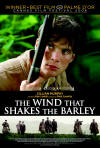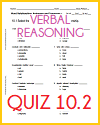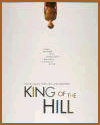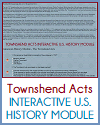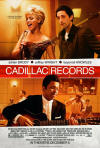How to Write Research Papers with Citations |
| www.studenthandouts.com > Miscellaneous > Citations |
|---|
| What are citations? Citations are listed sources for the information included in an essay. There are many different ways of citing the sources you use for a paper. The type of citations you use will depend upon your grade level, academic area, and college major, but most importantly on what your teacher or professor requires. What are the major types of citations? The most commonly used forms of citations are APA, MLA, and footnotes (or endnotes, since they are virtually the same). What is MLA? MLA stands for "Modern Language Association" and is the citation format created by this organization. The MLA publishes books which describe and explain the MLA formatting style. Online, you can get free information on MLA requirements courtesy of the OWL (Online Writing Lab) at Purdue University. The MLA format is used by university English departments and is most common in junior and senior high school English-Language Arts (ELA) classes. |
| What is APA? APA stands for "American Psychological Association" and is the citation format created by this organization. The APA publishes a book which describes and explains this formatting style, as well as offers free tips online here. Online, you can get free information on APA requirements courtesy of the OWL (Online Writing Lab) at Purdue University. The APA format is seldom used in high schools, but (ironically) is used in teacher colleges, as well as in university science departments. What do MLA and APA look like? And what are in-text citations? MLA and APA look very similar. The most telling characteristic is, at the end of a sentence, paragraph, or other segment of information, the surname of an author, followed by a year and perhaps a page number, located in parentheses. These citations at the ends of sentences or paragraphs are called in-text citations because they are inserted into the text of the paper. The major differences between the two have to do with the way the bibliographies (lists of references) look, the margins on a page, and general essay organization. |
| What are footnotes and endnotes? Footnotes and endnotes are the "old-fashioned" way of citing sources. On college campuses, they are popular in history departments. Rather than include an author's last name and date of publication at the end of a sentence, the end of a sentence (or longer segment of information) has a number slightly raised from the line of the text. The information on this numbered source is located at the bottom of each page (footnotes) or at the end of the essay, chapter, or book (endnotes). Historians tend to prefer footnotes/endnotes because they allow an author to "go off on a tangent" without interrupting the flow of the text. For example, a historian is writing a paper on Martin Luther and the Protestant Reformation, and is brimming with anecdotal information on Pope Leo X. However, although the Leo material might be very interesting to readers, it does not belong in the main body of the paper. Therefore, the writer includes this information in footnotes/endnotes, perhaps even using the footnote/endnote to list and describe great books and articles for further reading on Leo. In this way, footnotes and endnotes can be rather casual in tone. It is because footnotes can become so long and involved that they sometimes take up half of a printed page. This is why organizations such as the MLA and APA created their own citation formats. Good sources of information on "old-fashioned" citations are the New York Public Library Writer's Guide to Style and Usage and the Chicago Manual of Style. |
| >Why use in-text citations? Why cite sources at all? What's wrong with a basic bibliography? The problem with simply listing the sources you used at the back of the paper is that no one can tell where specific information came from. The point of citing your sources is that a reader can verify everything that has been written. Imagine a paper without in-text citations that says: "Joan of Arc became queen of France in 1789." This is clearly inaccurate on many levels. The bibliography for this paper lists 20 sources. Is a reader expected to read all 20 sources to find out where the writer got this inaccurate information? It is unreasonable to ask a reader to look through all 20 sources to find verification of this statement. Your job as a writer is to make verification of facts as easy as possible for your readers, by providing as much information as possible. Ideally, your reader should be able to quickly and easily verify anything and everything in your paper. |
| What's the deal with plagiarism? Plagiarism is taking someone else's work and passing it off as your own (whether you mean to or not). When you're writing a paper for school, odds are that the vast majority of factual content for your paper was not sitting in your head. You had to read some books, surf some websites, take some notes, and then had to sit down and stitch this information into an essay. Although it may feel like you've done a lot of work, your work is nothing compared to the work of the writers whose books you've read. You are using these writers' hard work and ideas to create your own essay, and it is important to give them credit. On college campuses, giving these writers credit is so important that failing to do so can lead to expulsion. Ouch! |
| But I thought plagiarism just meant copying exact sentences and stuff like that! Exactly copying words and phrases from books, etc., without putting them in parentheses is the most basic form of plagiarism, and it is the easiest type of plagiarism to catch. But it's not the only form of plagiarism. Read the information above! Remember that unless it is a thought or idea that you came up with entirely on your own, you need to cite a source for it. Will I get caught if I plagiarize? Yes. People who plagiarize are often surprised when they get caught, but they usually do. Teachers and professors can tell when they are reading your writing, or the writing of a professional. Funny story: A student, we'll call him Jacob, plagiarized his paper from an online source. The teacher could tell just by looking at the paper that it wasn't Jacob's original writing. The teacher gave Jacob an F and told him it was because he had plagiarized. Jacob denied it. The teacher then asked Jacob to read the paper aloud to her. Jacob could not correctly pronounce several of the words he'd used. When the teacher asked Jacob to clarify and explain issues included in his paper, it was obvious that Jacob had no real idea what the paper was about. Busted--and very easily. The moral of the story is: Don't plagiarize. Cite every bit of information in your paper. Once you get over the hurdle of learning to write in-text citations, it will become as natural as riding a bike. |
| But there's too much information. How can I remember where I got stuff from? The key to citing properly is to keep your notes organized from the very start. If you don't like typing, you can use index cards. You can even use a piece of note paper (one sheet for each source). Just be certain, even if you do not use a direct quote in your notes, that you write down the page where you found the information. For your own sanity later on, it is important that you be able to easily find where you got each piece of information. I did all my sources, but my teacher/professor said they weren't good sources. Remember: you are citing sources so that anyone reading your essay/paper can quickly and easily verify that what you've written is accurate. Bad sources are a type of inaccurate citation, in the sense that, sure, what you wrote was taken from a source; however, that source is not reliable. The reality is that anyone can get a book published. Every day, hundreds of people in the United States privately publish the things they've written, hoping to sell their books themselves. Neither the private publishers nor the individual writers are under any obligation to check that the books' information is accurate. Professional publishers are no better. The only difference between private and professional publishing is that a professional publisher takes on the risk of paying for a printing run because the publishing firm believes the book will be profitable. A book does not have to be accurate to be profitable (think of the books you may have seen on UFO alien abductions). The internet is a great example of "anyone can publish." For less than $50.00, anyone can buy a domain name, server space, and publish a website. Most websites are not reliable sources of information. The key is being able to tell what sources are good and what sources are bad. |
| How can I tell a good source from a bad source? Do some research on the author. Look at the information on the dust jacket of the book. Is the author affiliated with a university? A university professor is typically an author you can trust. Has the author published on this general topic before? Emeril Lagassi is a great chef and the author of many books, but if he writes a book on the history of the Renaissance, stay away. Politicians and pundits are likewise bad sources because the bulk of what they say is biased one way or another, and the "facts" they present are often misleading, inaccurate, or just plain untrue (this goes for all political persuasions). The internet is not off-limits, but should be used with caution. University websites are good sources, but Wikipedia (written by anonymous users) is not. Try to find the name of the author of a webpage. Check credentials. Verify information. If you find yourself drawn to Wikipedia, try looking at the sources listed in the footnotes. You might not be able to use Wikipedia for information, but you can use the same sources that Wikipedia used (so long as they are reputable). And with the internet, remember to use the full web address in your citation, not just the name of the site. The reader needs to be able to type in the web address you've given and be led straight to the page where you got your information. |
| In conclusion... Figure out what format your teacher or professor wants you to use (MLA, APA, footnotes, endnotes). Keep organized notes from the very beginning. Cite every piece of information in your paper. Remember the point of citations: leading your reader to exactly where you got the information. Practice, practice, practice... Every student initially hates citations and contemplates dropping out rather than writing a cited research essay. It will get easier, though. After a few papers, you'll really start to get it, and won't need to look up every single thing. Check out the features in your computer's word processor. Newer versions of Word, for example, do most of the citation work for you (and even create works cited pages). |
 |
|---|
| www.studenthandouts.com > Miscellaneous > Citations |
|---|


